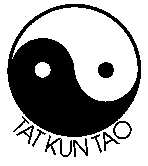Kung Fu and Wu Shu are generally in the western world, the two main terms used when speaking of the mainstream Chinese Martial Arts or Chinese Boxing. Another name applied throughout southern parts of China and South East Asia when referring to Chinese boxing, less known in the west is ‘Kun Tao’. Kun Tao is translated into English to mean ‘Fist Way’. ‘Kon Do’, 'Kon Tou' and ‘Kun Taw’ are also some of the ways it has been orally spoken and written down by various Filipino's and westerners.
Tat Kun Tao Kung Fu
was originally formulated by ‘Jose Millan’
or by his Chinese name ‘Ju Go’, (or 'Joe Go')
who was a Filipino-Chinese Martial Arts exponent from Cebu City. Having
learnt a Balintawak style of Arnis, he set about
to fuse the simplicity, and straightforwardness of Balintawak with his
already existing Kung Fu or Kun Tao knowledge from the Go Cho Kun (Five
ancestors boxing) style. The loose translation of Tat-Kun-Tao is, mind,
brain or thinking-fist-way. His school was in the area of where now Gaisano-Metro
now stands in Cebu city. The area mysteriously burnt down as was redeveloped.
During this time the senior instructors of Jose opened their own schools
and mostly trained from their different homes. Their most senior students
at the time were 'Victor Bulag' (Bulag means blind, as
he was blind in one eye and was his nickname) and 'Fred Cabao'
(Cabao or Cabaw was his nickname, taken from the Carabao). As
these people and other senior instructors trained from their respective
houses they all produced variations in their teaching, as some added to
their own teaching and some even removed certain aspects of Jose's style
and so different types of students were produced. The style splintered.
As Henry Jayme was later to remark:
"That's why one time when I went to one club with Fred, I was so surprised because their method of teaching had been changed. After you finished the basic, supposedly you start learning the breaking or 'bungkag' just like the Balintawak, they however will simply teach you the two main patterns, which according to Fred Cabaw is not really a strong system. This was also my own observation".
During the later years of his life Jose changed the name of his style to: 'Gokusa'.
An effective closed door external style Kung Fu or Kun Tao style. Its practical teaching methods utilise kicks, punches, deflection and blocking defences and also Ch'in-Na or Chinese grappling self defence.
A simple outline of instruction as taught in The Visayan Martial Arts School:
Basic single person patterns are the elementary aspects of this style with the techniques of the patterns broken down into their basic applications for training sessions. Ch'in-Na or Chinese grappling, breakfalls and throws are also infused between the patterns.
Ch'in-Na, grappling self defence is an art that has aspects common to many Asian Martial Arts.In Korea the arts of grappling are often called Ho shin sool or Ho shin moo sool. The Japanese tend to call their grappling styles Aiki Jutsu or Ju Jutsu. Basically the moves are the same from each style as the human body is the same the world over and there are only so many ways to twist and lock a joint or limb.
Later when the student has achieved the grade of black belt or instructor the double person patterns are taught. These are patterns that teach more advanced moves and techniques to the student.
| Home | seminars | balintawak | doce pares | tat kun tao | VMA instructors | travel pics | articles | FMA instructors | downloads | email | links |
©1998-2003 John Russell
